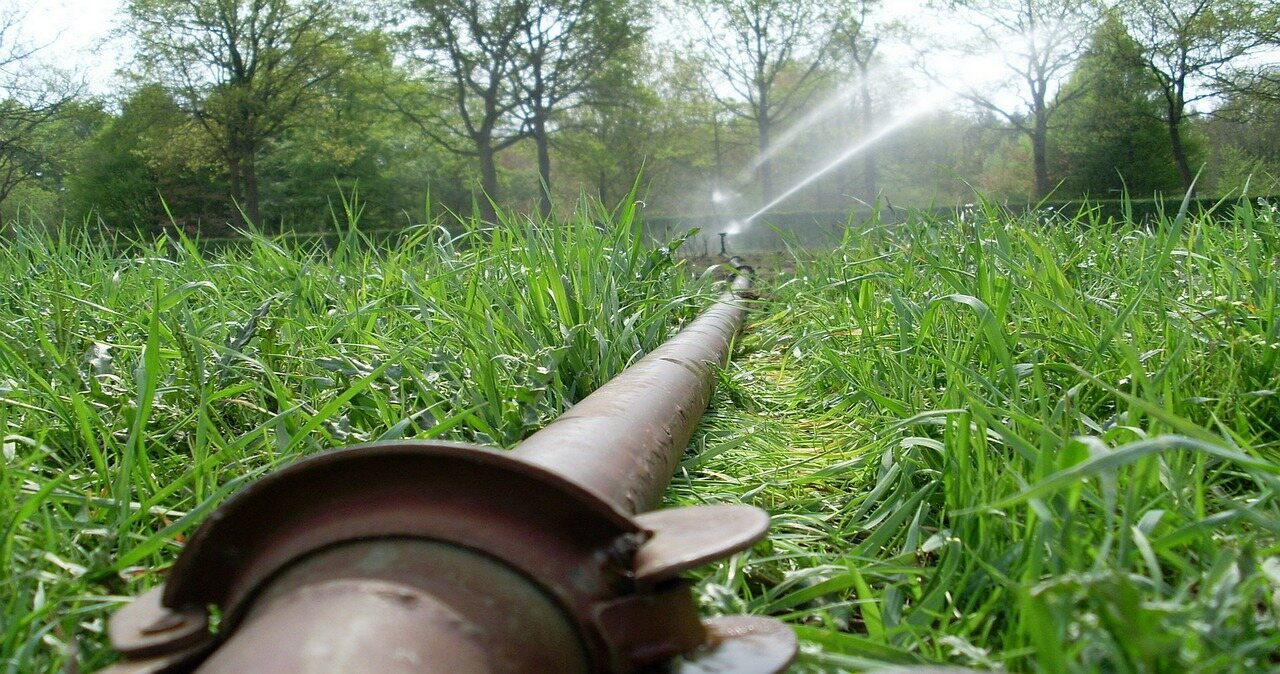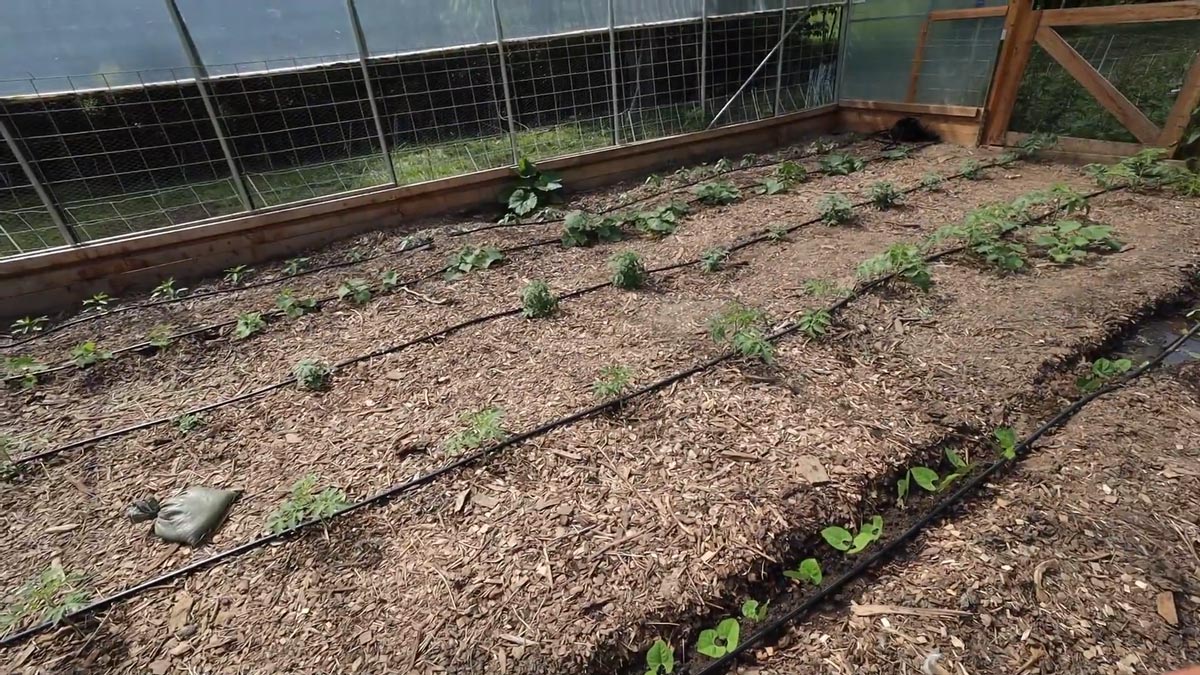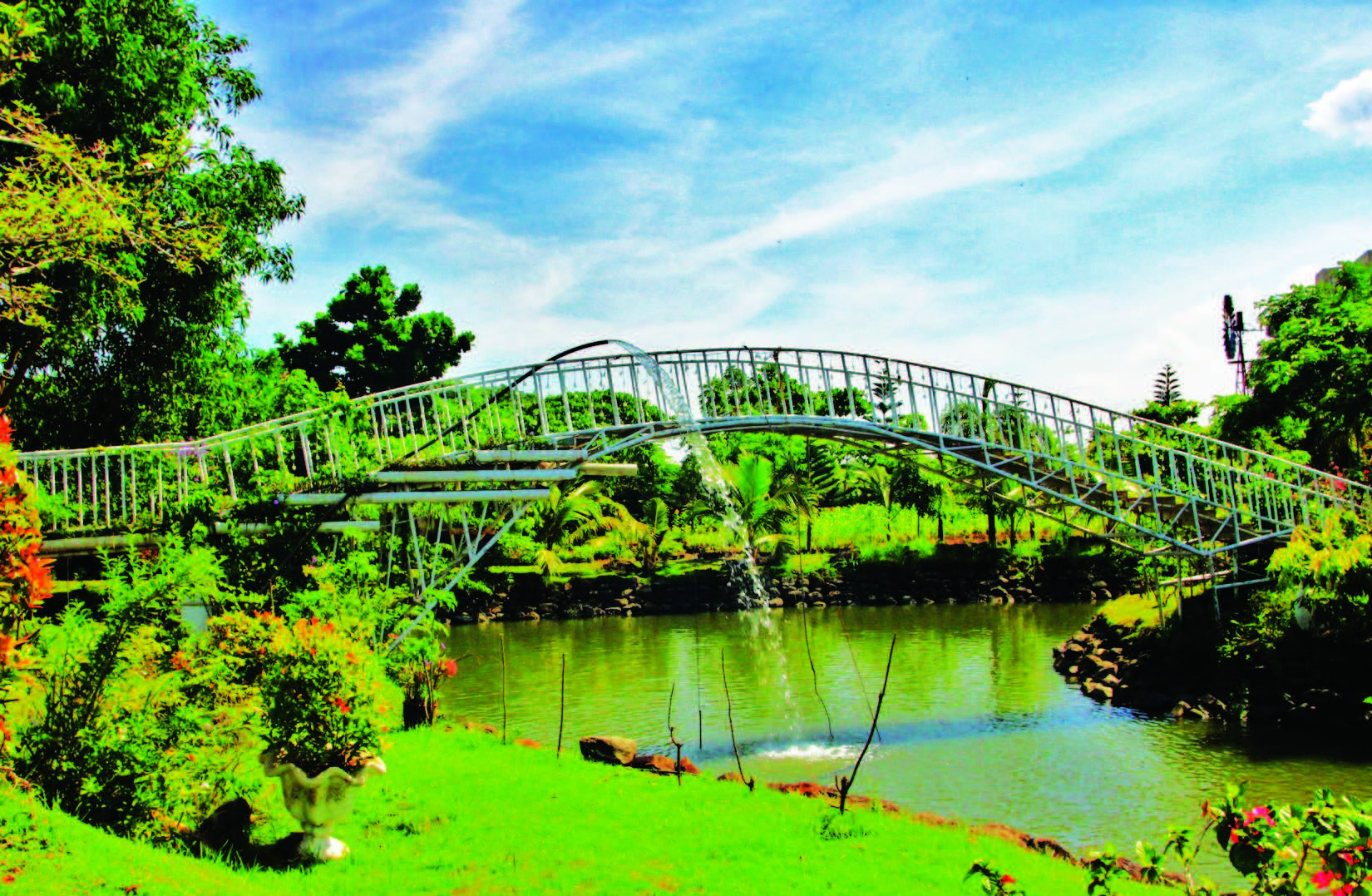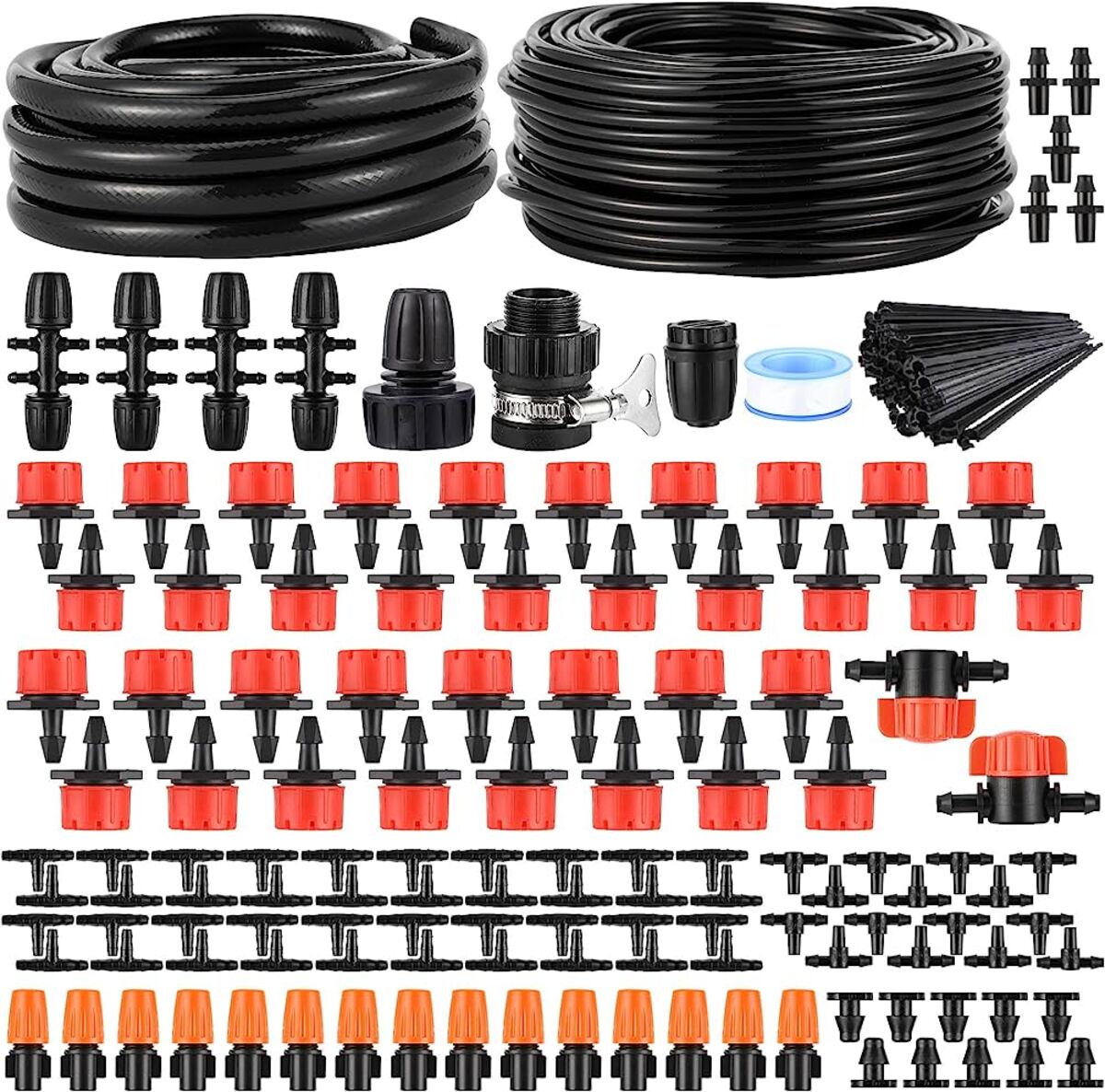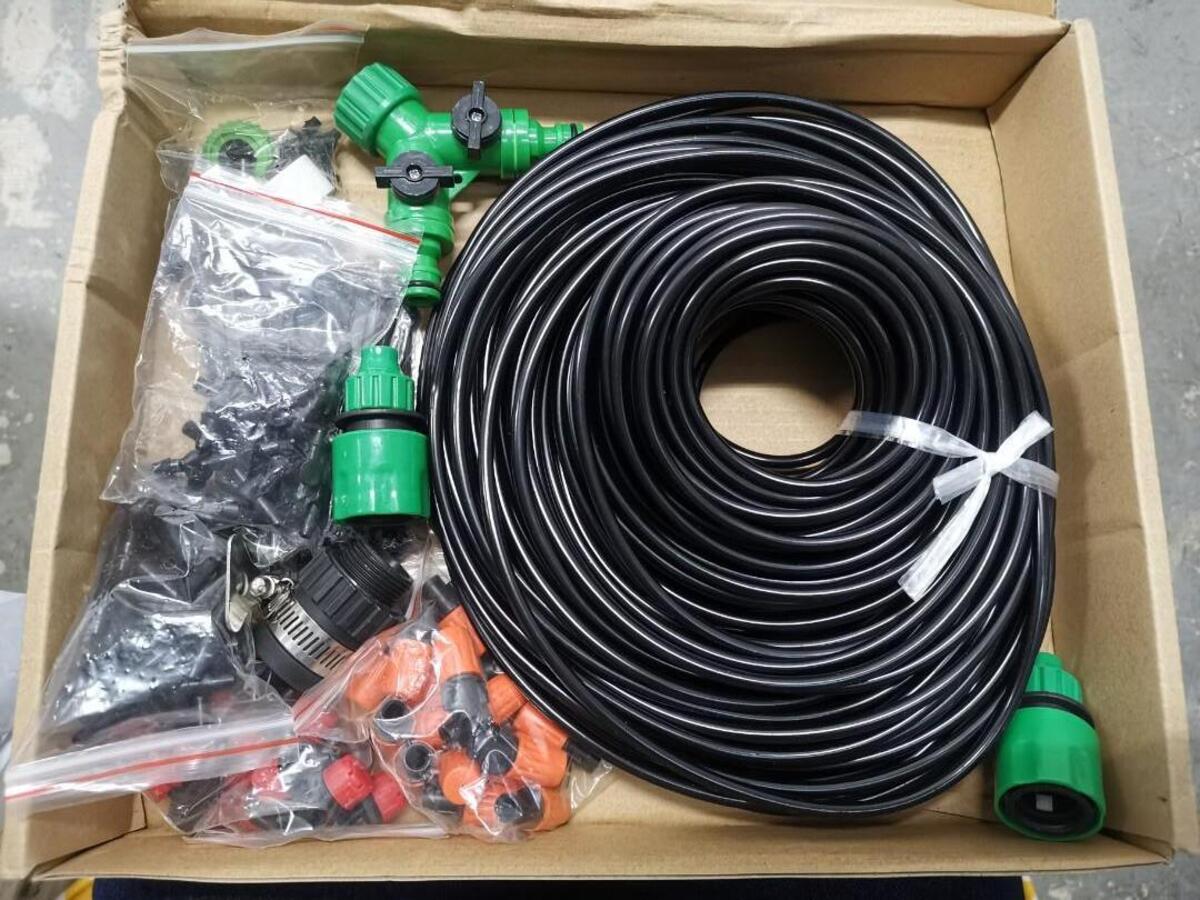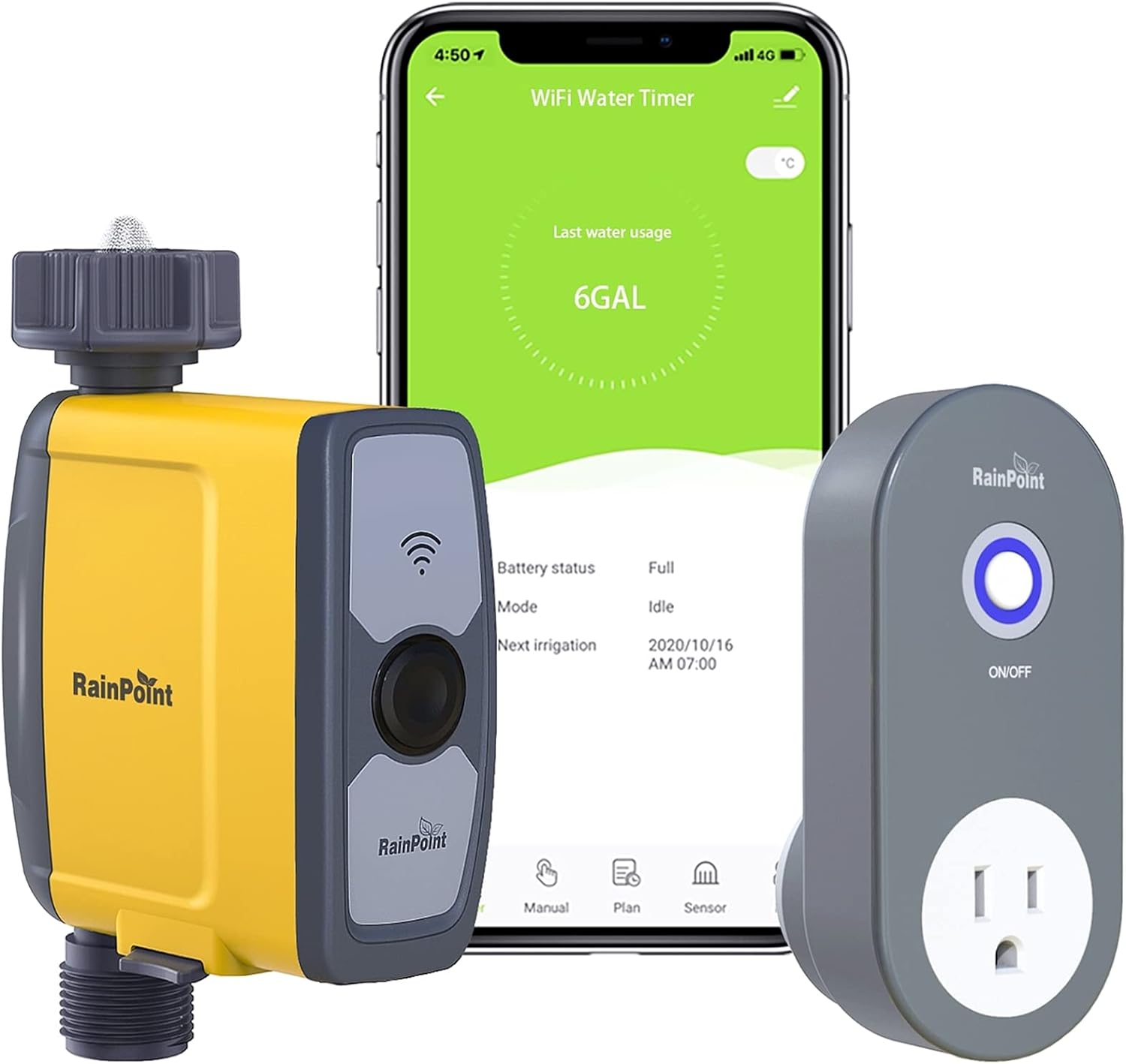Home>Gardening Basics>Tools and Equipment>What Is The Best Irrigation System For A Garden
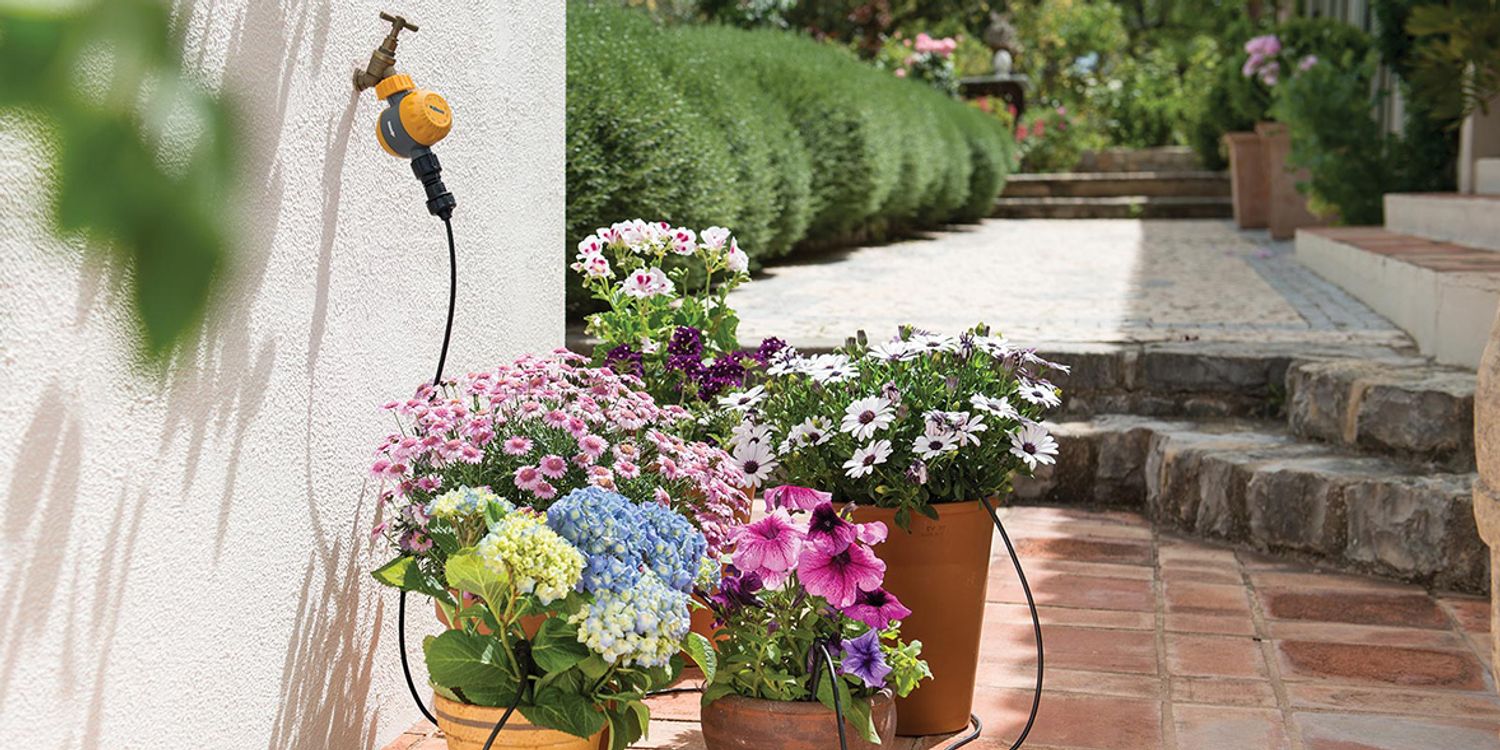

Tools and Equipment
What Is The Best Irrigation System For A Garden
Modified: January 22, 2024
Looking for the best irrigation system for your garden? Discover the top tools and equipment to ensure optimal watering and maintenance.
(Many of the links in this article redirect to a specific reviewed product. Your purchase of these products through affiliate links helps to generate commission for Chicagolandgardening.com, at no extra cost. Learn more)
Table of Contents
Introduction
Welcome to the world of gardens, where beauty and serenity coexist. Whether you have a small backyard oasis or a sprawling landscape, proper irrigation is essential to keep your garden flourishing. With so many options available, finding the best irrigation system for your garden can be a daunting task. But fear not! In this article, we will explore different types of irrigation systems and help you make an informed decision.
Choosing the right irrigation system for your garden is crucial for several reasons. First and foremost, it ensures that your plants receive the right amount of water, preventing both under-watering and over-watering. Additionally, an efficient irrigation system can help conserve water, making your garden more environmentally friendly. Lastly, a well-designed irrigation system can save you time and effort, as it automates the watering process.
When selecting an irrigation system, there are several factors to consider. The size and layout of your garden, the type of plants you have, the availability of water sources, and your watering preferences all play a role in determining the most suitable system.
Three popular types of irrigation systems are drip irrigation, sprinkler irrigation, and soaker hose irrigation. Each system has its own advantages and considerations, so understanding their features is crucial in making the right choice for your garden.
Drip irrigation systems, as the name suggests, deliver water directly to the roots of the plants, reducing water loss due to evaporation and ensuring that the water reaches where it is needed most. This system distributes water through a network of tubes and emitters, providing a slow and steady flow that minimizes runoff and wastage. Drip irrigation is particularly beneficial for gardens with plants that have specific watering requirements or for conserving water in regions with limited water resources.
Sprinkler irrigation systems, on the other hand, mimic rainfall by spraying water over the garden area. This system is an excellent choice for larger gardens or areas with a diverse range of plants. Sprinklers are available in different designs, such as pop-up sprinklers that retract into the ground when not in use. They can cover large areas efficiently, but it is important to position them correctly to avoid over or under watering specific areas of the garden.
Soaker hose irrigation is a simple and cost-effective system that consists of porous hoses that release water directly into the soil. This technique allows for deep watering and promotes healthy root growth. Soaker hose irrigation is ideal for gardens with dense plantings or narrow areas where other systems may not be practical.
Now that we have explored the three main types of irrigation systems, let’s compare them in more detail to help you make an informed choice for your garden.
Factors to Consider
Choosing the best irrigation system for your garden requires careful consideration of various factors. Let’s delve into some key considerations to help you make an informed decision:
- Garden Size: The size of your garden plays a crucial role in determining the type of irrigation system you should choose. For small gardens, a drip irrigation system or soaker hose may be sufficient. However, for larger gardens, a sprinkler system with adequate coverage is essential.
- Plant Types: Different plants have varying watering needs. Consider the types of plants you have in your garden and choose an irrigation system that can cater to their specific requirements. For example, delicate flowers may benefit from a gentle mist provided by a sprinkler system, while potted plants may require a targeted drip irrigation system.
- Water Source: Assess the availability of water sources in your garden. If you have access to a reliable water supply, you can opt for any irrigation system. However, if water resources are limited, a drip irrigation system is a more efficient choice as it minimizes water wastage.
- Water Conservation: Being environmentally conscious is essential in today’s world. Choose an irrigation system that promotes water conservation by minimizing runoff and evaporation. Drip irrigation and soaker hose systems excel in this aspect, as they deliver water directly to the roots, reducing water loss.
- Cost: Consider your budget when choosing an irrigation system. Each system has different costs associated with installation, maintenance, and operation. Factor in the long-term expenses and compare them with your budget to make the right choice.
- Convenience: If you prefer a hands-off approach to watering, consider an automated irrigation system with timers and sensors. This allows you to set specific watering schedules and ensures your garden is properly watered even when you’re away.
- Climate: Your local climate plays a significant role in determining the most suitable irrigation system. In hot and dry climates, a system that provides thorough and regular watering, such as a drip irrigation system, is crucial. In contrast, a sprinkler system may be more suitable for areas with mild and consistent rainfall.
By considering these factors, you can narrow down your options and select the best irrigation system tailored to your garden’s specific needs. Now, let’s explore the specific features and benefits of the three main types of irrigation systems: drip irrigation, sprinkler irrigation, and soaker hose irrigation.
Drip Irrigation Systems
Drip irrigation systems are an excellent choice for gardens that require precise and efficient watering. This system delivers water directly to the plant roots, minimizing water wastage through evaporation and runoff. Here are some key features and benefits of drip irrigation systems:
- Precision Watering: Drip irrigation provides targeted watering at the root zone, ensuring that each plant receives the right amount of water. This precision watering minimizes the risk of overwatering or underwatering, promoting healthier plant growth.
- Water Conservation: Drip irrigation significantly reduces water wastage compared to other irrigation methods. By delivering water directly to the roots, it minimizes evaporation and runoff. This makes it an environmentally friendly choice, especially in areas with limited water resources.
- Customizable Layout: Drip irrigation systems are highly flexible and can be customized to suit the unique layout of your garden. You can easily install a network of tubes and emitters to reach plants in different locations, including hanging baskets, raised beds, and rows of vegetables.
- Slow and Consistent Flow: The slow and steady flow of water in drip irrigation systems allows for deep penetration into the soil, promoting stronger and healthier root systems. This helps plants become more resilient to drought and improves overall water efficiency.
- Reduced Weed Growth: By delivering water directly to the plants, drip irrigation reduces water contact with the surrounding soil. This, in turn, minimizes weed growth since water is not readily available for weed seeds to germinate.
- Easy Automation: Drip irrigation systems can be easily automated by incorporating timers and sensors. This allows you to set specific watering schedules and ensure your plants are adequately watered, even when you’re away from home.
- Low Maintenance: Once installed, drip irrigation systems require minimal maintenance. Occasional checks for clogs or damage to the emitters or tubes are necessary, but overall, they are a low-maintenance option for garden watering.
Drip irrigation systems are particularly beneficial for gardens with plants that have specific watering needs, or for regions with limited water availability. The efficient use of water, precision watering, and customization options make drip irrigation a popular choice among gardeners. Next, let’s explore the features and benefits of sprinkler irrigation systems.
Sprinkler Irrigation Systems
Sprinkler irrigation systems are a versatile and widely used method for watering gardens and landscapes. These systems mimic natural rainfall by distributing water over the entire garden area. Here are some key features and benefits of using a sprinkler irrigation system:
- Wide Coverage: Sprinkler systems are designed to cover large areas, making them ideal for gardens with expansive landscapes or lawns. They can deliver water to a wide range of plants simultaneously, ensuring uniform watering throughout the garden.
- Adjustable Sprinkler Heads: Sprinkler systems offer customizable options with adjustable heads, allowing you to control the distance and pattern of water distribution. This flexibility enables you to target specific areas or adjust the watering needs based on the plant types and layout of your garden.
- Multiple Sprinkler Types: Different sprinkler types are available to suit various garden sizes and plant requirements. Pop-up sprinklers are popular for their convenience, as they retract into the ground when not in use, providing a neat and unobtrusive appearance.
- Water Efficiency: While sprinkler systems can be efficient when used correctly, it’s important to position the sprinkler heads appropriately to avoid water wastage due to evaporation or overspray. Using low-flow sprinkler heads and implementing smart irrigation controllers can further enhance water efficiency.
- Flexibility in Watering Schedule: Sprinkler systems can be easily set on timers, allowing you to schedule specific watering times. This feature is especially beneficial if you have a busy lifestyle or are frequently away from home, ensuring your garden receives consistent watering.
- Frost Protection: In areas where frost is a concern, sprinkler irrigation systems can be utilized as a frost protection measure. By applying water during freezing temperatures, a protective layer of ice can form on plant surfaces, insulating them from the cold and minimizing damage.
- Easy to Monitor: Unlike other irrigation systems, sprinkler systems provide a visual indication of water distribution. You can easily observe the spray pattern and adjust the heads or water pressure as needed to ensure optimal coverage.
Sprinkler irrigation systems are suitable for gardens of all sizes, particularly those with lawns, large plant beds, or areas with diverse plant types. The wide coverage, adjustable heads, and flexibility in watering schedules make sprinkler systems a popular choice for many gardeners. Now, let’s explore the features and benefits of soaker hose irrigation systems.
Soaker Hose Irrigation Systems
Soaker hose irrigation systems are a simple and effective method for watering gardens, particularly those with dense plantings or narrow areas. These systems consist of porous hoses that release water directly into the soil, promoting deep and efficient watering. Let’s explore the key features and benefits of using a soaker hose irrigation system:
- Even Water Distribution: Soaker hoses provide a gentle and even distribution of water along their entire length. The porous material allows water to seep out slowly and directly into the soil, ensuring that each plant receives a consistent and adequate amount of water.
- Deep Watering: The slow release of water from soaker hoses allows for deep penetration into the soil. This promotes healthy root growth as plants are encouraged to develop deep root systems. Deep roots can withstand drought conditions better and are less susceptible to water stress.
- Water Efficiency: Soaker hose systems are designed to minimize water wastage. By delivering water directly to the soil surface, they prevent evaporation and reduce runoff. This makes soaker hoses an environmentally friendly choice that optimizes water usage.
- Flexible Installation: Soaker hoses can be easily maneuvered around plants, trees, or shrubs, making them suitable for gardens with various layouts. They can be laid along rows of plants, beneath mulch, or even snaked through planters, providing efficient and targeted watering for specific areas.
- Low Maintenance: Once installed, soaker hoses require minimal maintenance. Periodic checks for clogs or leaks are recommended, but overall, they are a hassle-free option for garden watering.
- Cost-Effective: Soaker hose irrigation systems are often more affordable compared to other irrigation methods. Their simplicity and ease of installation make them a budget-friendly choice for gardeners looking for an efficient watering solution.
- Weed Control: By delivering water directly to the plants, soaker hoses minimize water contact with the surrounding soil. This helps to suppress weed growth since the water is only available where it’s needed – at the root zones of your plants.
Soaker hose irrigation systems are particularly beneficial for gardens with dense plantings, including vegetable gardens, flower beds, and small spaces. The even water distribution, deep watering capability, and water efficiency make them an attractive choice for gardeners seeking a simple and effective irrigation solution. Now that we have explored the key features and benefits of the different irrigation systems, let’s compare them in more detail to help you make an informed decision for your garden.
Comparison of Different Irrigation Systems
Choosing the best irrigation system for your garden requires weighing the pros and cons of each option. Let’s compare the three main types of irrigation systems – drip irrigation, sprinkler irrigation, and soaker hose irrigation – to help you make an informed decision:
- Water Efficiency: Drip irrigation systems are the most water-efficient option as they deliver water directly to the plant roots, minimizing evaporation and runoff. Soaker hose systems also promote water efficiency by delivering water directly to the soil surface. Sprinkler systems, while effective if used correctly, have a higher potential for water loss through evaporation and overspray.
- Precision Watering: Drip irrigation systems provide precise and targeted watering, ensuring that each plant receives the proper amount of water. Soaker hoses also offer even water distribution along their length. Sprinkler systems can cover larger areas but may require careful placement for specific plants to avoid over or under-watering.
- Coverage Area: Sprinkler systems have the advantage of covering large areas efficiently, making them suitable for expansive gardens or lawns. Drip irrigation and soaker hose systems are better suited for smaller areas or specific plant beds where precise and localized watering is required.
- Cost: Drip irrigation systems can be more expensive to install initially due to the cost of tubing, emitters, and accessories. Soaker hose systems are relatively inexpensive, and sprinkler systems offer a range of options at various price points. However, the long-term water savings and efficiency of drip irrigation and soaker hose systems can lead to cost savings over time.
- Installation and Maintenance: Drip irrigation and soaker hose systems are relatively easy to install and require minimal maintenance once in place. Sprinkler systems may be more complex to install, especially if additional components such as timers or sensors are included. Maintenance for sprinkler systems often involves checking for clogged heads, adjusting spray patterns, and ensuring proper water flow.
- Flexibility: Drip irrigation systems can be customized to suit the layout and specific watering needs of your garden. Soaker hoses are also flexible and can be easily maneuvered around plants. Sprinkler systems can be adjusted to different spray patterns and distances, providing some flexibility in watering various areas of the garden.
- Plant Suitability: Drip irrigation and soaker hose systems are well-suited for gardens with plants that have specific watering requirements or those that benefit from deep and consistent watering. Sprinkler systems work well for lawns and areas with a variety of plants, but careful attention and adjustment may be needed to meet the specific needs of different plant types.
Consider these factors when making your decision to ensure that you choose the irrigation system that best fits the needs of your garden. Whether you prioritize water efficiency, precision watering, or cost-effectiveness, there is a suitable irrigation system available for every garden. Now, armed with this information, you can confidently select the best irrigation system to keep your garden flourishing.
Conclusion
Choosing the best irrigation system for your garden is essential for ensuring proper plant growth, water conservation, and convenience. After comparing the three main types of irrigation systems – drip irrigation, sprinkler irrigation, and soaker hose irrigation – based on factors such as water efficiency, precision watering, coverage area, cost, installation and maintenance, flexibility, and plant suitability, you can now make an informed decision.
If water efficiency and precision watering are your top priorities, a drip irrigation system is the ideal choice. It delivers water directly to the roots, minimizing water wastage and providing precise amounts of water to each plant. Drip irrigation is particularly beneficial for gardens with plants that have specific watering needs or in regions with limited water resources.
For gardens with a larger area, diverse plant types, or lawns, a sprinkler irrigation system is a suitable option. While it may require careful placement and adjustments, sprinkler systems offer wide coverage and the ability to adjust spray patterns to meet your garden’s needs.
Soaker hose irrigation systems are a simple and cost-effective choice for gardens with dense plantings or narrow areas. They provide even water distribution and deep watering, promoting healthy root growth and reducing water wastage by delivering water directly to the soil surface.
Always consider factors such as garden size, plant types, water source, water conservation, cost, convenience, climate, and your personal preferences when choosing an irrigation system.
By understanding the features, benefits, and considerations of each irrigation system, you can select the one that suits your garden’s specific needs and your own gardening style. Whichever system you choose, remember to monitor and adjust the watering schedule as needed to ensure optimal plant health and growth.
With the right irrigation system in place, you can provide your garden with the necessary water it needs, cultivate a thriving and beautiful landscape, and enjoy the bountiful rewards of your hard work and dedication to gardening.
